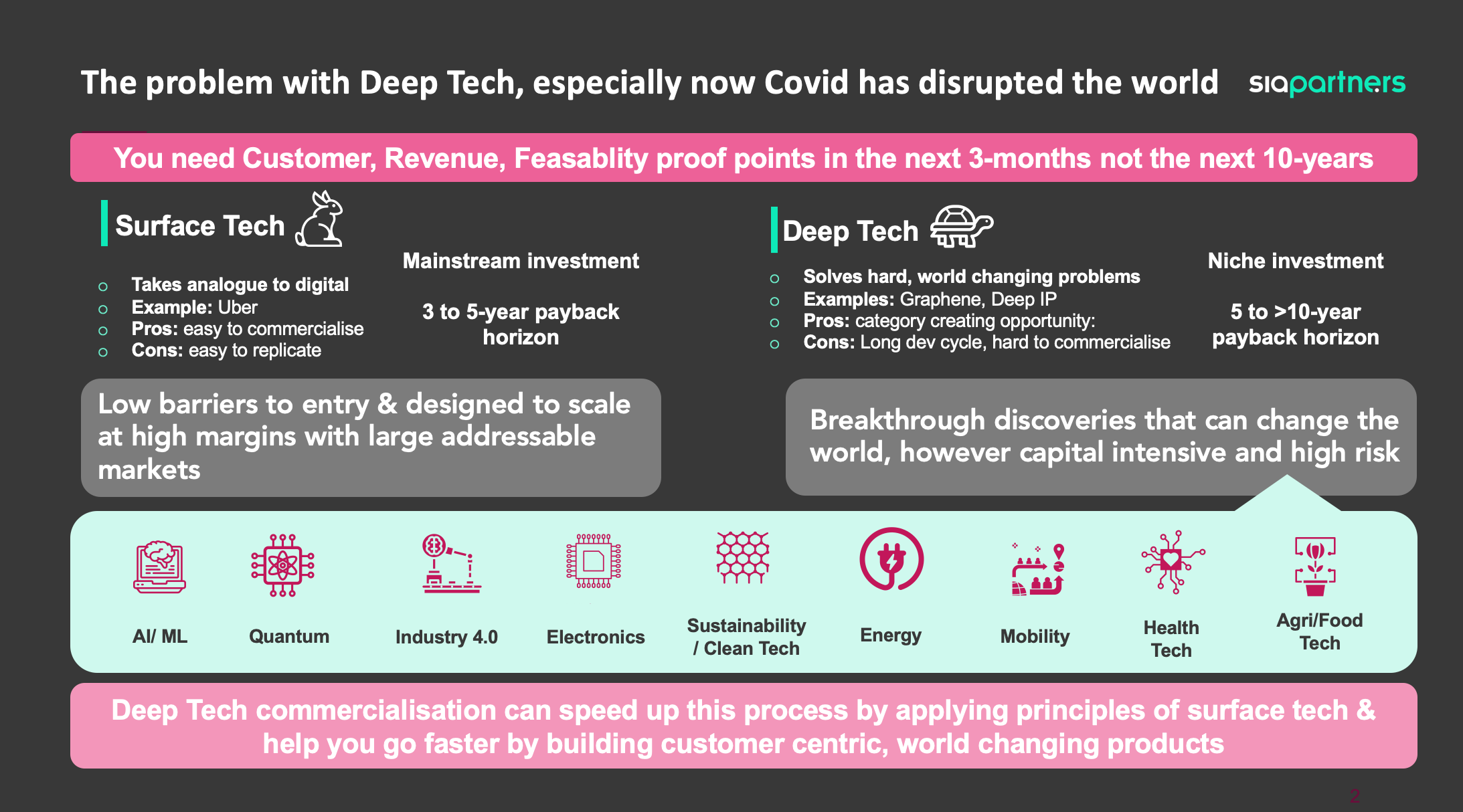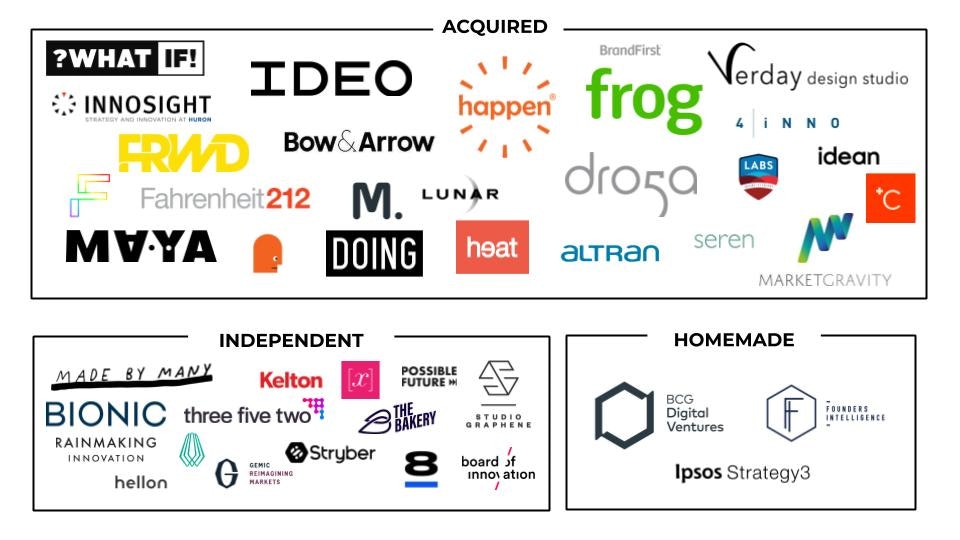This is the third article in our series on Unsexy Innovation. Part 1 was on navigating procurement and part 2 was on buying innovation services.
If we want the world to change we need to get better at commercialising the crazy promises that deeptech makes.
Deeptech sits in a precarious place in the market right now with Covid-19 slashing R&D and innovation budgets while stories like Nikola acting as warnings about the eyewatering amounts of capital that can go into hype machines. [Nikola has seen its market capitalisation go from $30bn down to $10bn since its stock market listing in June and deals with BP and GM hang in the balance after allegations of fraud were made against the company].
It’s going to be a rough ride to get real-world impacting tech invested in and scaled up — but we can get better at it.
Deeptech fails because in 5 years of development, no one has talked to customers
As an in-house corporate innovation manager and later as a consultant, I see, day in day out, corporates sitting on latent IP, startups with world-changing ambitions flirting with corporates and corporates sitting on vast amounts of latent potential that was built or acquired but never fully monetised.
When I started looking at deeptech I was jaded by years of tech industry promise and under-delivery — having had everything from the “connected cow” (it wasn’t cost-effective for farmers) to care home robots (aside from the cost, old folks don’t want to interact with robots but they do need better monitoring) pitched in unworkable business plans. Was this going to be another overpromisalooza with terms designed to confuse the general public?
But… as often happens in my life, I was wrong. The problem with deeptech is not the technology but commercialisation. Often the technology is developed and functional, but shuffling along commercially misshapen and unsellable.
To avoid confusion it is worth defining deeptech here:

In reality, the divide between deeptech and surface tech is not quite so black and white — it is all tech. And if something is working in Surface Tech, why not steal it for Deeptech and vice versa?
The two worlds need to collide, and we need to steal from the surface tech playbook to make deeptech go faster.
Where deeptech goes wrong
Financially, there’s a lot of ugly about developing deeptech:
- Because it is something new, there are no existing customers or comparables and organic growth is hard
- There’s a lot of hardware, which is upfront capital expenditure with a long route to making it sellable = no immediate cashflow
- Solving really hard, real-world problems means living with a lot of unknowns, risk and stressful outcomes
- It is hard to bring together deep technical expertise, great management and funding at the same time
But from my experience, this isn’t where deeptech fails. It fails because:
- In 5 years of development, no one has talked to customers
- It has made bombastic claims about the size of financial returns it can generate to justify subsequent funding rounds, then not proved itself and funding dries up before it becomes useful
- It has not been made with a buyer in mind, with commercial constraints and evidenced a willingness to pay
- It has not been communicated in human language, with clear, tangible use cases about the problem it solves for the customer
These aren’t new problems. In one old role, I would regularly see products that had been around for years but not managed to break the commercial barrier.
One example was a product was a Driver Drowsiness monitor, which had to be worn as a helmet connected to someone’s ear... The product made it from concept to funding, to creation, all the way to sitting in a showroom where everyone commented: “that’s so impractical, why not just put it on the wrist?”.
Enter commercialisation
R&D teams should not consider this a dirty word spoken by the sales teams. We all need to start talking earlier in the process and be incentivised for it to succeed because if we want to impact the world, we have to make sure these technologies can survive and scale, commercially.
Here are some initial thoughts about how to make this happen:
- You need genuinely disruptive IP — or to have acquired it. A lot of corporate innovation is quite tame or subdued by internal politics. Companies need to validate and seek critical feedback on deeptech from trusted sources in the market or acquire validated disruptors then rapidly incubate and commercialise them.
- You need to incubate it away from your operating business units and fuel it with capital, top talent and partners to speed up market entry.
- You need to demonstrate it, kill scepticism, generate public interest and — above all — talk to potential customers
- You need to promote it, make sure your sales team understand it, build a pipeline and give outsized incentives for your sales team to sell it
- You need to convert that pipeline beyond just the proof of concept stage and scale it into real use. Build use cases that your sales team and customers understand
- You can then move into a product roadmap and incrementally improve.
- You can then sell it/ spin it out/ license to partners
But please, never leave it sitting as latent IP, it is a waste — not just of the company funds used to develop or buy it — but because the technology never has the opportunity to make an impact on the world.


